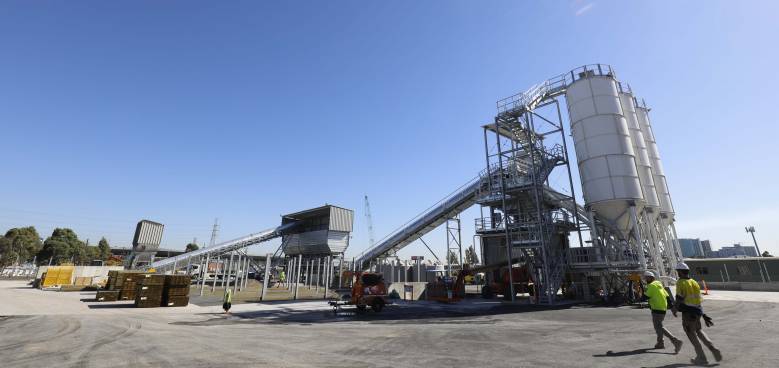Helping to build Melbourne’s biggest ever public infrastructure project
Holcim has constructed a state-of-the-art concrete plant in North Melbourne to supply the Metro Tunnel Project’s Tunnels and Stations Package.
Arden Concrete Plant – Melbourne Metro Tunnel Project
The $11 billion Metro Tunnel Project is building twin nine-kilometre rail tunnels and five new underground stations at North Melbourne (near Arden Street), Parkville, State Library at the northern end of Swanston Street, Town Hall at the southern end of Swanston Street and Anzac at St Kilda Road. It will transform the way people move around Melbourne and improve access to key landmarks and destinations.
The volume of concrete supplied by Holcim to the project is enough to build 10,000 homes, using a myriad of mixes from high-flow piling concrete to fibre-reinforced spray. CYP Design & Construction – a consortium led by John Holland, Bouygues Construction and Lendlease – is delivering the Tunnels and Stations package.
Headed by Concrete Project Director David Hill, the Holcim project team is employing and training high-priority job seekers in operations and production roles, as well as utilising the services of various social enterprises and indigenous organisations. Special measures are also in place to minimise environmental impacts, including innovative processes to reduce the carbon footprint of the supplied concrete.
“The structural concrete has had to be designed to meet stringent characteristics in order to achieve the project’s sustainability and durability targets, all while being practical for use in the field,” says David Hill.
“Admixtures are used in the tunnel spray concrete mixes to essentially put the concrete to sleep for several hours, or until the tunnel constructors are ready to use it – the concrete is then reactivated at the point of application down in the tunnel. Having the spray concrete mix asleep allows the concrete to sit idle in the back of a specially designed truck in the tunnel.”
Holcim concrete is being used to build the station boxes for Parkville, North Melbourne and Anzac stations, and other structural foundations for the underground stations, such as diaphragm walls. At North Melbourne Holcim has poured concrete for the base slab of the station box, and at Anzac Station on St Kilda Road, concrete has been poured for station roof construction. Following roof construction, excavation commences underneath.
“Much of the concrete supplied will be visible once the project is complete and the stations are open for use by the public.”
Holcim also has 80 trucks in operation on the Metro Tunnel Project, fitted out and compliant with the current Major Projects Vulnerable Road User Alignment Group’s recommendations to ensure the highest possible safety measures for pedestrians and cyclists. At the conclusion of concrete supply into the Metro Tunnel Project, Holcim will need to demobilise and remove the entire Arden Street Batch Plant from site. Until then, works will continue around the clock to deliver the tunnels and stations.
“I am very proud to lead an enthusiastic team dedicated to delivering a quality product and service to the biggest ever public transport infrastructure project in Victoria’s history,” says David Hill. “We are contributing, on a large scale, to Victoria’s infrastructure growth and sustainable future all while further establishing Holcim as a market leader in major civil construction.
“Much of the structural concrete mixes supplied are designed to use Blast Furnace Slag replacing up to 65% of the traditionally used cement, significantly reducing the carbon footprint.”









